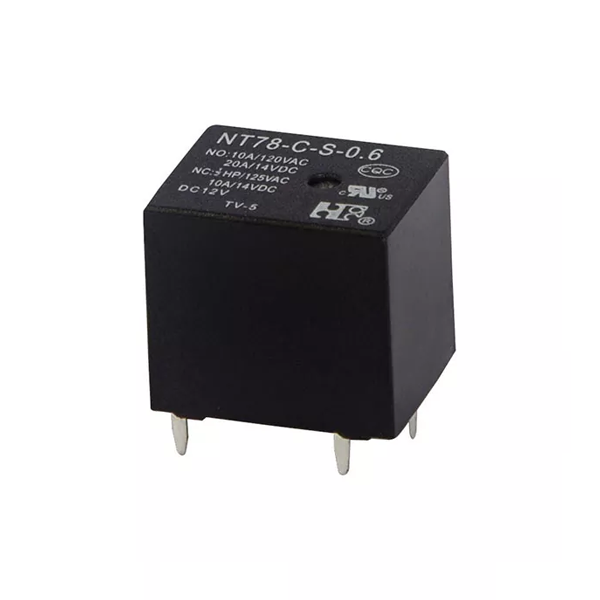What Is an Automotive Relay and Why Is It Essential for Your Car?
2024-12-06
When it comes to keeping your car running smoothly, many drivers may not think about the small but crucial components that help the vehicle function properly. One such component is the automotive relay. Although it's a small part, an automotive relay plays a significant role in ensuring the efficiency and safety of your vehicle’s electrical system.
In this blog, we will explore what an automotive relay is, how it works, and why it's essential for your car. Understanding the importance of this device can help you appreciate its value and ensure your vehicle is always in top shape.
What Is an Automotive Relay?
An automotive relay is an electrical switch that uses an electromagnet to control the flow of current in a circuit. In simple terms, it allows a small amount of current to control a larger amount of current in another circuit. Relays are often used to control high-power devices, such as lights, horns, and fans, without overloading the main electrical system.
In most vehicles, relays are installed in the fuse box and can be found in various parts of the car. Each relay serves a specific function, and some vehicles have multiple relays to manage different electrical components simultaneously.
How Does an Automotive Relay Work?
Automotive relays consist of an electromagnet, a set of contacts, and a spring. When an electrical current flows through the coil of the electromagnet, it creates a magnetic field that pulls the contacts together, completing the circuit. This allows electricity to flow to the connected electrical components. When the current is switched off, the spring forces the contacts to open, breaking the circuit and stopping the flow of electricity.
Relays function similarly to light switches, but the difference is that they can handle higher currents without generating excessive heat or requiring large physical switches. This makes them ideal for controlling high-power devices in vehicles without the risk of short circuits or overloads.
Why Are Automotive Relays Important?
1. Efficient Control of High-Power Components
Cars contain many high-power electrical components, such as the headlights, air conditioning system, and fuel pumps. Directly controlling these components with a switch could be inefficient and unsafe due to the high current demands. Automotive relays allow these components to be controlled with a much smaller electrical current, ensuring that the car's electrical system remains efficient and protected.
2. Protecting Your Vehicle’s Electrical System
Automotive relays are essential for protecting your car’s electrical system from potential damage caused by overloads or short circuits. By acting as a middleman, relays ensure that the power flowing to high-demand components doesn’t exceed the capacity of the wiring or other delicate parts of the vehicle’s electrical system. This can prevent electrical fires or damage that could be costly to repair.
3. Improved Reliability and Longevity
By reducing the wear and tear on electrical components, automotive relays help ensure the long-term reliability of your car. When relays are used in a vehicle's circuits, they take on the job of regulating and distributing power more efficiently than switches or direct connections would. This reduces the risk of components burning out or failing prematurely, improving the overall longevity of your vehicle.
4. Enhanced Safety
Automotive relays also contribute to the safety of the vehicle’s electrical system. Since relays control electrical flow with precision, they prevent overheating, which could lead to fires or electrical malfunctions. Additionally, relays often have built-in safety features that automatically disconnect the power in case of a fault, providing an additional layer of protection for both the vehicle and its occupants.
Common Applications of Automotive Relays
Automotive relays are used in a variety of car functions, including:
- Headlights: Relays help manage the power flow to the headlights, ensuring that they turn on or off without drawing excessive power from the battery.
- Fuel Pumps: Relays ensure that the fuel pump operates only when needed, preventing unnecessary drain on the vehicle’s battery.
- Air Conditioning Systems: Relays are used to control the electrical current to the air conditioning system, ensuring it operates efficiently.
- Windshield Wipers: The relay allows the windshield wipers to function properly by controlling the power flow to the motor.
- Horn and Alarm Systems: Relays help operate the car’s horn or alarm system without the need for a high-current switch.
Signs That Your Automotive Relay May Be Failing
While automotive relays are durable, they can eventually wear out or fail. Here are some common signs that your vehicle’s relay may need attention:
- Electrical components are not working: If you notice that your headlights, air conditioning, or other electrical systems aren’t functioning properly, it could be due to a malfunctioning relay.
- Flickering lights: If your headlights or interior lights flicker or turn on and off intermittently, a faulty relay could be the cause.
- Unusual noises or smells: A failing relay may emit a buzzing sound or a burning smell due to overheating, indicating it’s time for a replacement.
- Blown fuses: If the relay is overloaded or short-circuited, it may cause fuses to blow, leading to the loss of electrical functions.
Conclusion: Why You Shouldn't Overlook Automotive Relays
In conclusion, automotive relays may be small, but they are integral to the overall function, safety, and longevity of your vehicle's electrical system. From efficiently managing high-power components to protecting the system from overloads, relays help ensure that your car runs smoothly and safely. Regular inspection and maintenance of relays are essential to avoid electrical issues and to keep your vehicle operating at its best.
Next time you find yourself troubleshooting an electrical problem in your car, remember that the relay could be the culprit. Understanding its role can help you make more informed decisions when it comes to your car’s maintenance and electrical needs.



